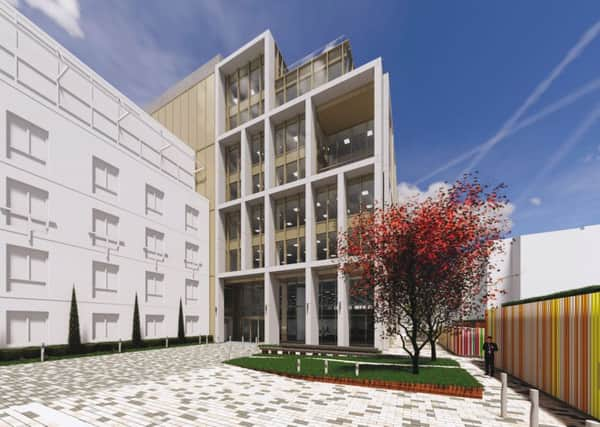Commercial property: Fighting for space on the city streets


With the amenities and technological readiness of buildings becoming of increasing importance in attracting employees, Edinburgh’s landlords can no longer rely on the old standards to compete.
A recent survey conducted by CBRE, Optimising Human Capital, highlighted attracting and retaining labour as one of the top-three challenges faced by occupiers – with the majority citing it as an issue doubling in the 12 months prior.
Advertisement
Hide AdAdvertisement
Hide AdThe report identified four levers which companies are using to influence and enhance their appeal to skilled labour – procurement and fit-out strategy; flexible space strategy; user experience strategy and technology strategy.
The demands on developers of new buildings are greater than ever before, and those who haven’t taken cognisance of the changing landscape will lose out to those who have.
For instance, BAM’s Capital Square, a 120,000sq ft city-centre office development in Edinburgh, is being built with the four levers identified in the CBRE report in mind, recognising that while the location, location, location mantra remains valid, it has new bedfellows.
Due to complete in May 2020, Capital Square is already 55 per cent pre-let.
The only other speculative office scheme under construction in the Capital is Vastint’s 60,000sq ft New Fountainbridge.
For a city with an average annual Grade A take-up of about 260,000sq ft, it is highly likely that these office schemes will be pre-let some time in advance of their completion.
This raises the question as to what those existing or new occupiers in Edinburgh do when they can’t find suitable space.
The issue is arguably further exacerbated by the fact that take-up in the city includes a high proportion of occupiers from the creative sector, where the employment war is even more vicious.
Advertisement
Hide AdAdvertisement
Hide AdIf the city can’t deliver the armaments, occupiers are fighting at a disadvantage and will choose a different battlefield.
A small number of older buildings can be adapted to meet some of these new demands but it is easier to build new than retro-fit, particularly when it comes to user experience and technology.
It is vital that Edinburgh developers follow in the footsteps of BAM and Vastint to deliver accommodation that meets the expectations and requirements of today’s occupiers, or we risk losing out to other major cities.
Strategies for skills, space and service are converging and occupational decisions are no longer the sole domain of the property teams.
Not all developers are embracing this new reality and, with the speed of change only increasing, those that simply repeat what they’ve done before will find they’re talking a different language to occupiers.
It’s imperative for Edinburgh that its new developments are fluent in ‘occupier’ if the city wants to remain a solid contender in the UK labour war.
Stewart Taylor is senior director at CBRE in Edinburgh.